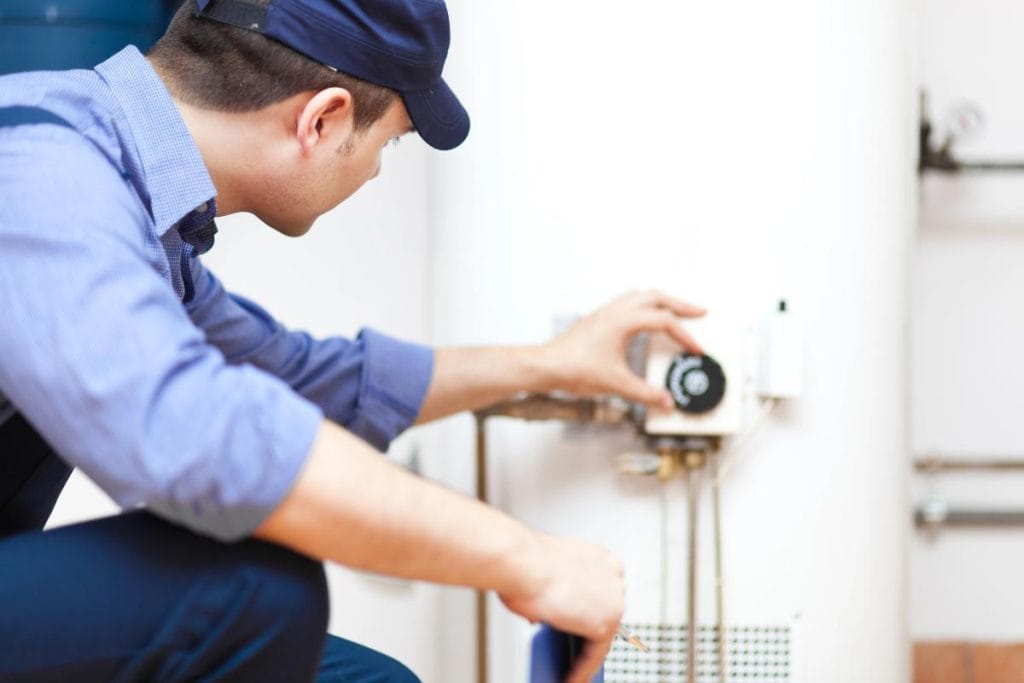
Malfunctioning water heaters deliver a major punch to your budget, and nobody wants the hassle of a unit breaking down all of a sudden. However, with just a little bit of tender loving regular care, you can add years to the appliance’s life. Want to know how to extend the life of your water heater? With these helpful water heater maintenance tips, you can keep your unit in great shape and make sure it lasts for as long as possible without the stress of unexpected breakdowns.
Understand the Lifespan of Your Water Heater
The average tank water heater can last between 8 and 12 years, while tankless water heaters can last for even 20 years if they are maintained and looked after properly. Knowing the age and expected expiration date of the water heater can help you to organize the maintenance service more appropriately.
Then, what are the ways to get those additional years? Keep reading for water heater care strategies that are easy to follow and highly effective.
Flush the Tank Regularly
Doing regular flushing of the tank is the easiest and most efficient way of maintaining the water heater. Minerals in the water can build up as sediment over time, settling at the bottom of the tank. The minerals present in the water are precipitated as sediment and deposited at the bottom of the tank over time. This deposition will reduce the efficiency of the unit and actually damage it.
- How often? Ideally, you should flush your tank every 6 to 12 months.
- Why? It helps remove sediment that can corrode the tank from the inside, improving efficiency and extending the unit’s lifespan.
If you’re ever unsure or need expert assistance, feel free to reach out to Fuse Service, the experts in San Jose water heater installation and maintenance.
Check the Anode Rod
The anode rod is a vital piece that stops the water heater from rusting. It has the property of attracting corrosive elements in water, thus guarding the tank directly. Eventually, the rod will corrode and replacement will be necessary.
- Tip: Be sure to check your anode rod every 2 to 3 years, and if it’s more than halfway worn out, it’s time for a replacement.
- Why? A worn-out anode rod can lead to rust, significantly shortening the life of your water heater.
Replacing the anode rod is a simple yet effective part of regular water heater maintenance. Taking this small step to care for your water heater helps avoid unexpected disruptions in your daily routine, keeping your home warm and running efficiently.
Set the Right Temperature
Temperature setting is not only for comfort but also for the water heater’s longevity. Keep the temperature at a comfortable 120 degrees Fahrenheit (49 degrees Celsius) for both safety and efficiency.
- Why? By setting the temperature lower, you’re not only reducing the strain on your water heater but also cutting down on sediment buildup and saving on energy costs. Not only will it keep your energy bills lower, but it also makes your home safer, especially if you have little ones running around or elderly family members.
- Bonus: Setting the right temperature also reduces the risk of burns, making it safer for families with young children or elderly loved ones.
Insulate the Tank and Pipes
In the event that your water heater is in an area of your home that has a cooler temperature (like the garage or basement), then you can add insulation to increase the efficiency of your water heater. Install a lagging over the tank and hot water pipes for the first few feet to minimize heat loss and keep the system at a temperature.
- Why? Insulation reduces heat loss, meaning your water heater doesn’t have to work as hard to keep the water hot. This results in less wear and tear on the unit.
- How to? Purchase pre-cut insulation jackets and pipe insulation kits for your water heater tank from any hardware store.
This small step will keep your water heater cozy and save you money in the long run!
Test the Temperature and Pressure Relief (T&P) Valve
The T&P valve is there to keep your water heater safe by releasing pressure if it overheats. However, if the valve is faulty, it could lead to serious safety risks, such as tank explosions.
- How to test? Just lift the valve’s lever and let it snap back. You’ll hear the rush of water or see it drain out if it’s working properly.
- Why? A functioning T&P valve ensures that your water heater operates safely, reducing the risk of catastrophic failures.
Perform Regular Inspections

Regular inspections can find minor problems before they turn into expensive repairs.
- Tip: Fuse Service offers comprehensive inspections to ensure your water heater is running efficiently and safely.
- Why? A regular professional check-up can catch wear and tear before it becomes a bigger problem, helping your water heater last longer.
Consider Installing a Water Softener
Mineral deposits can build up over time and cause problems for your water heater if you live in hard water areas. Thus, hard water brings deposits to build up rapidly, which, in turn, makes the appliance work harder and cuts down its lifespan.
- Solution: Consider installing a water softener to reduce the amount of calcium and magnesium in your water supply.
- Why? By softening the water, you prevent sediment buildup, which helps keep your water heater running smoothly and your home happier.
Your water heater is a vital element of your home, and with a little extra care, you can ensure that it operates perfectly for many years. These little things can contribute a lot towards your unit’s efficiency and long life. Maintain your water heater in the best condition, and you can have hot water without any issues for many years!
